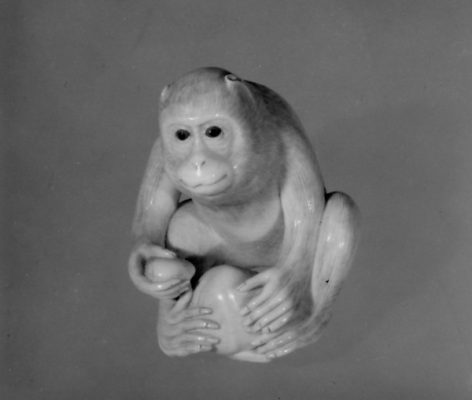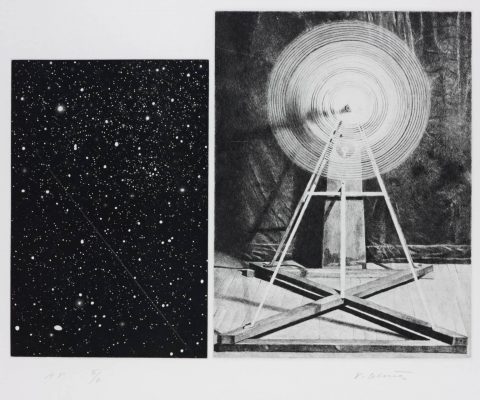At the Konditorei
Close, warm, and humming with the relaxed sounds of post-
midday Kaffee-Kuchen. The cakes are modestly presented in a
glass cabinet: stripes of sponge alternate with chocolate cream;
globes of mango gleam on mousse. Oblongs of raspberry and
banana jelly. Older couples sit at round tables, sip kaffee and
lift cake-cream inch-by-inch to mouths. They’re conscious not
to eat too quickly, so as to avoid nausea, and ensure instead
continued pure delight. A little nothing, pleasant chat; a few
read the papers.
Our protagonist has the table by the window, hung with a doily
curtain. There’s a cigarette smoking itself out in his thrown-
away left hand; his closed right one rests on the open pages of
an empty notepad.
See (1)
Florian was walking with his schnauzer, Bernie, along the far
shore of the See. He preferred this less trodden, further side
because it meant he had a good view of the town, busy and
self-important on that nearer side. And he liked being closer to
the great faces of mountains, which jacked themselves right up
hard, grey and granular, above all the people’s things and
houses.
His head was clear and only had in it air, Bernie running and
her fetching the next stick, and the soft-firm earth and grass
under their feet.
They stopped on the path to look over the See. Its surface was
soft as a lady’s undergarment. You could place your finger in
its surface and feel it drop under, without resistance. Today’s
winter water had black, mirrored surfaces; nothing could be
seen beneath them.
Then Florian’s eye settles on something, as a fisherman
focuses on the red point at the end of his line in the
water. His eyes are drawing an outline – round the
objects he can see. They are – this shape – like this – two
rectangles bobbing among some dead black stalks. The
black of the rectangles is greyer than the See’s black.
Their sheen is harder than the water’s; more moulded,
less easy to penetrate.
At the Pension
The protagonist arrives at the pension. This is situated in the
village adjoining the town, where slopes are levelled in tiers to
make space for the houses. There are broad, roofed shelters to
store rows of clean logs for heating the farmhouses.
As he completes his information in the hotel ledger on the
counter, something catches his eye. He pauses. Another guest is
in the doorway, dragging two large, grey plastic cases. They
must be very heavy, judging by the discomfort of the man
dragging them indoors, the sweat on his brow and the red of his
face.
‘Hallo Herr Leitner,’ says the pension owner, over the shoulder
of the protagonist bent over the ledger. The handles of the
suitcases spring back into place as the guest lets them go to
return to his car. The pension owner explains to the protagonist
that Herr Leitner holidays here in the village by the See every
year. Usually he would bring his wife. By the look of the
luggage it would appear that she is joining him later. The Herr
had made a last-minute reservation for the New Year; perhaps it
is a surprise occasion for her, the pension owner suggests, and
he is going to fetch her subsequently, with everything made
ready for her here first. That wouldn’t be rather strange – to
make a preliminary trip only for the luggage? The owner laughs
at the foreigner. ‘No, not really strange.’ Herr Leitner reappears
heaving a third piece, a woman’s black, faux-leather holdall
with patent panels.
Hands and Feet
Bernie is excited by the smell in the suitcases. They are heavy,
and Florian is curious too. He prises open the slimy rim of one
of the cases. Inside, right there on the lake path: somebody’s feet
and hands, cut off.
The Divers
The police fitted the masks over their faces, oxygen tanks
securely clipped. The superintendent watched while his men
slipped into the water, as easily as steel poles or two long fish.
The See closed after their entrance her soft, wide black eyelid.
They weren’t long gone. This was the sixth dive. They had
already found a male corpse, so the superintendent was
pleased. But the last diver believed he could make out a second
shape between the rocks on the lake-bed here – 5km out in the
water and 150m deep – something artificial, but he needed
assistance to dredge it out.
The superintendent watched as the two divers re-emerged.
Only the neoprene tops of their heads were visible at first, like
the caps of mushrooms. Then their plastic eyes, followed by
the whole hi-tech, life-saving contraption of gear rigged on
their narrow shoulders. The divers staggered over the
reinforced deck of the police boat, dragging between them a
black bag, veined with green and water: a dank-smelling
woman’s holdall.
Her Head
Just the head itself. Oblong of blue-cloud
concrete – cheap, breeze-block type – piled
round the damp ovoid of face and eyes.
Head+Block. hedinblok. Sculptural; a
possible art piece?
Her, cast. What could you do with the
concrete shell of her? Make another her. In
fibreglass, beeswax, ebony, bronze. But this
cast is poorly made. Inside, the head of
her’s too heavy, weighs its inner jellies
down to burst the tensure of the sand and
stone grains which surround her. The
concrete barely reaches her cheeks, lips,
eyebrows, nose in patches. There are fragile
rings of grey and silver hair. The head-
matter, blood and damp, sags of skin –
strains against this brutal box.
Nose tilts up, the forehead raised. Maybe she’s an angel zephyr
made from chiselled stone, her eyelids flowing lines of wind.
She rides up mountains – out of box, suitcase, coffin, block.
See (2)
The See looks on. The protagonist walks away, notepad in
hand. He leaves the town with his insight into one dramatic
story, like the brief, quivering shudder of a swimmer as she
leaves the lake, feels the air on her body, cold.
The See looks on. She looks at herself. Because she is the See
she can begin to see from the perspective of her liquid centre,
her navel, and see all the shores as equidistant from this point.
In all directions is only sleek and black wet water, the houses
distant rectangles.
See swallowed the man and his body, the plastic bodies of his
cases, the contents / bodies of the hands and feet of his
dismembered wife. See swallowed him and his ball and chain:
the heavy block of head with its agonised face, heaved beside
him in a black holdall. The failed sculpture all cast and ripped,
dead biological matter straining its manmade case.
The lake swallowed it all, feeling green and secret. But still
they scanned and fished. They plumbed a line and got all the
things out, laying them one by one on the boards, and fitted
them together in their human way, to get to the bottom of the
story.



